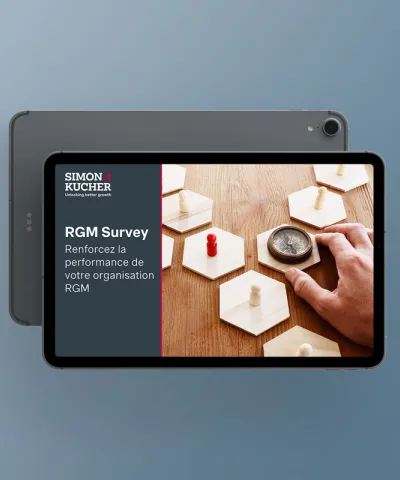Executive insight: What your sales team wants (and doesn’t want) you to know
As a CRO, you recognize that your sales team may not always provide the full picture. Forecasts often lean toward optimism, and pipeline reviews can feel more like a stage performance than accurate depictions of deal progress. There is a delicate balance between stress-testing these projections and preserving the optimism needed to be successful in sales. And while there’s alignment in monthly or quarterly business reviews, you can still sense the unspoken sentiment: “Leadership doesn’t fully understand what it’s like on the field right now.”
You’re not wrong.
The reality is that the biggest risks to your revenue don’t always come from competitors or market disruptions, they can come from inside your own sales organization. And while your team might not say it, their behaviors (and misbehaviors) are shaping your numbers as much as any external factor.
Our team has spent decades inside sales organizations, from high-growth disruptors to global incumbents, and we’ve seen one undeniable truth: the gap between what leadership believes and what sales teams think, feel, and do is costing you growth. Ignoring that gap could be a threat to the CRO’s job, because it’s a threat to your revenue.
Here’s what your team wishes you knew, and what they hope you never find out:
What your sales team wants you to know
- CRM admin is crushing productivity
Every hour spent updating the CRM is an hour lost with customers. Top performers free up 15–20% more selling time by streamlining processes, and 63% of reps say admin tasks directly reduce their selling time. Most companies ignore the user experience of CRM for managers and reps.
- They want coaching, not checklists
Reps want coaching that truly sharpens their skills and builds confidence through hands-on, meaningful experiences. High-growth organizations prioritize experiential learning that drives real results over checklist training. And, mentors need coaching and development to be good at this. Picking the right time to coach (e.g. two weeks before a pitch versus two days after) can make a huge difference.
Q4 2024 Sales Effectiveness Insights: What Top Performers Are Doing Differently
- Recognition should match reality
Celebrating “lucky wins” (such as gifted territories or easy accounts) signals to your team that politics matter more than performance. Recognition is powerful, but only when it matches effort and behavior. Sometimes winning a first $100k deal at a new account is worth as much strategically as a $5M deal at an incumbent.
- Transparency builds buy-in
Without logic behind your quota or territory design, reps aren’t engaged. Involving your reps increases their ownership and trust in the organization’s strategy to reach customers.
Organizing sales to be fit for growth
- Customers expect education
Competitors are winning by teaching and coaching, not just by pitching. However, many reps lack the time or tools for consultative selling. 70% of B2B buyers say they select providers who educate them during the buying journey. Make sure the math of capacity, account load, and touch model work.
- They dread loss reviews
Sales reps see post-mortems as blame sessions rather than growth opportunities. Instead of focusing on why deals were lost and how they can improve, they move on quickly to protect their confidence. Risk and loss are part of being in sales, and learning from it should be constructive.
What your sales team doesn’t want you to know
- The pipeline isn’t accurate
When forced into overly optimistic forecasts, reps pad their pipelines. Inflated pipelines may look healthy, but they mask the real risks and limit insight into future business outlook.
Q4 2024 Sales Effectiveness Insights: What Top Performers Are Doing Differently
- They are gaming compensation
Arbitrary incentive structures create complacency; reps pull forward or delay deals until they “count.” In volatile markets, misaligned incentives drive misaligned behavior, with 78% of sales leaders admitting their current incentive plans don’t align with long-term growth. The metrics, territory designs, formula mechanics, and quota policies can all contribute to gaming “leaks”.
- Discounting is their default tool
Reps lean heavily on discounting as their most reliable tool. Without the right tools to sell value, they fear losing a portion of their customers if discounting is restricted.
5 ways sales leaders can drive growth
- They don’t trust marketing leads
Many reps quietly reprioritize accounts, believing certain “marketing qualified leads” aren’t worth pursuing. The sales and marketing divide is costing conversion.
Organizing sales to be fit for growth | Simon-Kucher
- They think leadership is out of touch
Privately, many sales professionals believe leadership is disconnected from customers and even regional reps. This perception, whether true or not, erodes confidence in strategy and culture.
- They are hiding whitespace in their accounts
Reps sometimes maintain untapped potential as a form of leverage. They view it as their future pipeline to control and save for a rainy day, rather than sharing accurately with the company for pipeline review. This limits the organization’s ability to plan and grow strategically.

Why this matters to sales leaders
Organizations that face these realities typically outperform their peers on revenue, margin, new logos, and retention. Those that don’t often slip into the “long-tail disruption trap” losing deal by deal and quarter by quarter.
The good news is that these are solvable challenges.
- Simplify processes and CRM user experience so sellers can spend more time selling
- Coach early with impact skills, not stats.
- Redesign incentives for alignment and resilience in tricky markets
- Involve the field in bottom-up quota setting
- Equip reps to educate customers with confidence
- Bridge sales & marketing with shared accountability
How we can help
We’ve helped CROs across all industries:
- Identify customer buying criteria, diagnose holes in sales strategy, build competitor battle-cards/playbooks, and refine the go-to-market (GTM) model to be more competitive.
- Rebuild incentive frameworks that stay fair and motivating, and align with growth across changing market conditions.
- Create data-driven, transparent, and fair territory models that balance opportunity potential with revenue expectations. (Organizing sales to be fit for growth)
- Build value selling capabilities that help reps defend price and sell outcomes instead of discounts. (5 ways sales leaders can drive growth)
- Train reps to connect business outcomes to customer priorities. (Rethinking Sales Strategy)
Ready to take your sales organization to the next level?
Simon Kucher can help redesign your sales strategy for better growth. Whether you need to realign incentives or strengthen value-based selling, our experts are here to help. Please reach out to us today to start transforming your sales team’s performance.
Contributing author: Trey Suddeth








